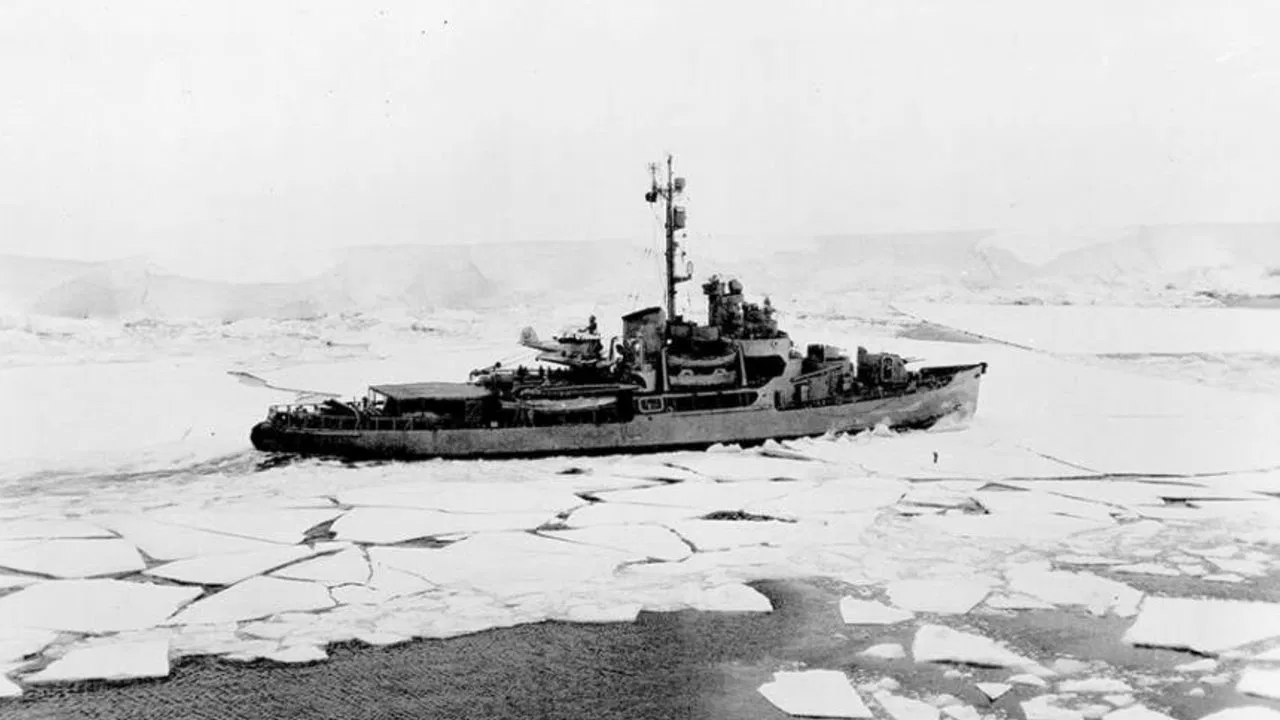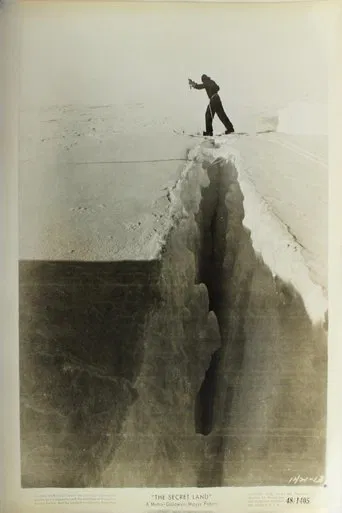

Telling the story of Byrd's 1946 expedition to Antarctica, this is narrated by Robert Montgomery, who himself had been in the service; this one has a whole buncha hollywood bigshots who had served in the military. Van Heflin, Robert Taylor. We were done with WW II, so now we could move on to exploring more places. We had all those war ships with nothing to do, so thirteen ships took the admiral down to Antarctica. We watch as some of the ships get stuck in the ice; they kidnap various types of seals to bring back to the U.S, set up tent-town on the ice shelf, and send out planes to map the area. Directed by Orville (Bunny !) Dull. last thing he did in hollywood. Pretty interesting for history buffs. Certainly gave the military something to do after being so necessary during WW II. won an oscar.
... View MoreMissing from the documentary is a convincing explanation of why the Navy undertook Operation Highjump: the task force was hastily assembled from ships that were being demobilized after WW2 and it was hastily dispatched --- if memory serves, one ship was never even able to join the convoy due to operational issues. The official line was that Highjump was designed to test Navy preparedness for high latitude operations against the Soviet Union (as well as surveying parts of Antarctica); if that were actually true, wouldn't the Navy have spent more than a couple of weeks assembling and fitting out craft for the experiment? And why send the submarines and Marine combat soldiers at all? There is a "conspiracy theory" regarding Highjump: that Byrd was investigating a possible Nazi submarine base in "Neuschwabenland" --- the huge Antarctic area claimed by Germany in the late '30s, which includes ice caverns (recently discovered, or rediscovered) that are accessible only by submarine. At any rate, Byrd landed opposite Neuschwabenland and deployed his forces in classic fashion -- the naval contingent was divided and advanced on his flanks while his aircraft probed the center. After two planes were lost (shot down?), Byrd cut the mission short. Strangely, his reports and his personal diary covering the period remain secret to this day.
... View MoreRobert Montgomery, Robert Taylor and Van Heflin all narrate this documentary from MGM. It chronicles the US Navy's Antarctic expedition commanded by Admiral Byrd from 1946 to 1947. This was an enormous undertaking--involving 4000 men and many ships (including an aircraft carrier)! Unfortunately, the print I found of this film on archive.org is in terrible shape--which is really a shame since this film would be spectacular otherwise.As I sat and watched this film, I couldn't help but admire the men and marvel at the insane conditions in which they worked. For example, the Navy flew very large C-47 (DC-3) from a carrier deck--using jet packs to force the lumbering planes into the air. There also is a portion where you learn about a plane crash and the crew was forced to spend two weeks waiting for help! I was also amazed to see that there is some relatively warm water in a snow-less region of Antarctic--all due to volcanic activity in the area. Overall, this is a very captivating and exciting film. You wonder at the naval cinematographers who recorded all this footage under horrific conditions! If you do see this film, I also recommend you watch Werner Herzog's recent documentary "Encounters at the End of the World"--where he visits many of the same places you see in "The Secret Land". Two amazing films.
... View MoreSecret Land, The (1948) *** (out of 4)Oscar-winning documentary from MGM takes a look at the dangerous expedition of Admiral Richard E. Byrd and thousands of American soldiers who tried to make it to Antarctica. The documentary, shot in beautiful Technicolor, shows the men leaving America and shows us the constant dangers of exploring one of the most dangerous places in the world (and especially at this point in history). If you're a fan of adventure then you're going to really eat this thing up. The film really plays out like an action film and it contains some pretty good drama as well as some great visuals. I'm really not sure how many cameras MGM sent to capture this footage but we get a lot of great stuff. Everything from the wildlife to a Christmas dinner to even a helicopter crashes into the sea are here for us to see and we get just about everything else that you can think of. One of the more dramatic moments happen towards the end when a plane crashes in the fog and two weeks later they're found alive but they're going to have to walk ten miles to reach a point where someone can get them. Knowing that all of this stuff is real just adds to the entertainment and the Technicolor also adds a lot. Robert Montgomery, Robert Taylor and Van Heflin narrate.
... View More